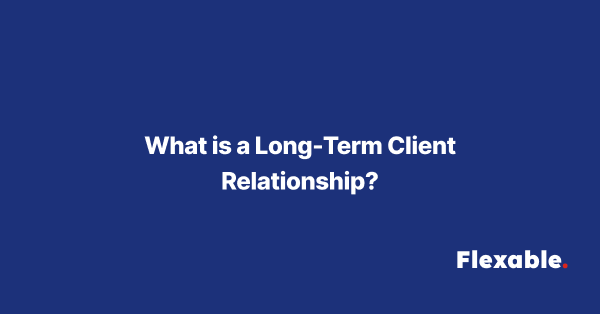In freelancing, a long-term client relationship refers to a sustained partnership between a freelancer and a client, typically spanning multiple projects or ongoing work over an extended period. Unlike one-off engagements, long-term relationships are built on trust, mutual respect, and consistent delivery of value. They are highly beneficial for freelancers seeking stability and for clients looking for reliable, skilled professionals who understand their needs and business goals.
Why Are Long-Term Client Relationships Important?
Building long-term client relationships is a cornerstone of success in freelancing. These relationships offer significant advantages:
- Stability for Freelancers: Long-term clients provide a consistent income stream, reducing the uncertainty often associated with freelancing.
- Efficient Workflows: Over time, freelancers gain a deeper understanding of the client’s preferences, processes, and goals, resulting in faster and more efficient project delivery.
- Trust and Reliability: Long-term relationships are based on mutual trust, fostering smoother communication and collaboration.
- Reduced Client Acquisition Effort: Maintaining an existing client is more cost-effective and time-efficient than constantly searching for new ones.
- Enhanced Client Outcomes: For clients, working with the same freelancer ensures continuity, consistency, and a deeper understanding of their brand and requirements.
Characteristics of a Long-Term Client Relationship
- Ongoing Engagement
Long-term relationships involve regular or repeated work, such as monthly blog posts, website maintenance, or continuous design updates. - Mutual Trust and Respect
Both the freelancer and the client value each other’s expertise and honor commitments, creating a collaborative partnership. - Adaptability and Growth
A successful long-term relationship evolves over time, with the freelancer adapting to the client’s changing needs and contributing to their growth. - Open Communication
Clear, transparent, and frequent communication is essential to address challenges, set expectations, and align goals.
How to Build Long-Term Client Relationships
- Deliver High-Quality Work Consistently
Exceptional work is the foundation of any lasting relationship. Meeting or exceeding client expectations helps establish credibility and trust. - Communicate Effectively
Regular updates, timely responses, and proactive communication ensure that the client feels valued and informed. - Understand the Client’s Goals
Taking the time to understand the client’s objectives and aligning your work with their vision creates a more meaningful partnership. - Be Reliable and Professional
Meeting deadlines, honoring commitments, and maintaining professionalism build confidence in your abilities. - Offer Value Beyond Expectations
Suggesting new ideas, sharing insights, or finding ways to improve the client’s business demonstrates your commitment to their success. - Establish Clear Agreements
Well-defined contracts with clear terms on deliverables, payment schedules, and scope of work set the foundation for a positive relationship.
Benefits of Long-Term Client Relationships for Freelancers
- Steady Income: Working with the same client over time ensures a reliable revenue stream.
- Reduced Marketing Efforts: Fewer resources are needed to find new clients, allowing more time to focus on delivering quality work.
- Skill Enhancement: Long-term projects often provide opportunities to refine skills and develop expertise in a specific niche.
- Stronger Portfolio: Consistent work with a reputable client adds credibility to a freelancer’s portfolio.
Benefits for Clients
- Consistency: Long-term freelancers deliver work aligned with the client’s brand and preferences.
- Time Savings: Clients save time by not having to onboard and train new freelancers repeatedly.
- Stronger Collaboration: Over time, the freelancer gains a deeper understanding of the client’s needs, leading to more tailored solutions.
- Trustworthy Partnerships: Building a relationship with a reliable freelancer minimizes the risks of poor-quality work or missed deadlines.
Challenges of Maintaining Long-Term Client Relationships
- Scope Creep: Over time, clients may expect additional work without proper adjustments to compensation or deadlines.
- Complacency: Freelancers might become too comfortable and neglect innovation or improvement in their work.
- Changing Needs: As a client’s business evolves, their needs may shift, requiring freelancers to adapt or risk losing the relationship.
How to Sustain Long-Term Client Relationships
- Set Boundaries: Clearly define project scopes and renegotiate terms when additional work is requested.
- Stay Adaptable: Keep up with industry trends and the client’s changing requirements to remain relevant.
- Foster a Collaborative Mindset: Treat the relationship as a partnership, focusing on mutual growth and success.
- Seek Feedback: Regularly ask for input to understand how you can improve and better serve the client.
Conclusion
A long-term client relationship is a cornerstone of a successful freelancing career. It offers financial stability, professional growth, and the opportunity to build lasting partnerships based on trust and mutual respect. By delivering exceptional work, maintaining open communication, and adapting to the client’s needs, freelancers can nurture these valuable relationships and create a sustainable, rewarding freelancing business. For clients, the consistency and reliability of a trusted freelancer are invaluable in achieving their long-term goals, making these partnerships a win-win for everyone involved.

